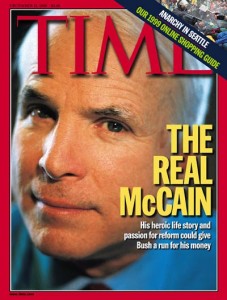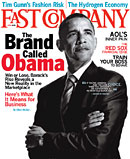brands are more than symbols and words
I guess you could say I’ve taken up somewhat of a crusade against thinking or talking about brands as only symbols and words.
The latest offender is Patt Cottingham, a self-described “art director/creative director, communicating brand messages in print, TV, outdoor, and interactive media.” Her paper which got published by brandchannel.com and then picked up by various bloggers is entitled, “Brand Obama or Brand McCain” — 
The problem is, all of her commentary is based on the candidates’ messages (visual and verbal). Logos and words are simply symbols and expressions of a brand — brands must be OPERATIONALIZED and real brand value must be DELIVERED.
A brand is a bundle of values and attributes that define the VALUE delivered to customers (in the context of Patt’s article, constituents) and the WAY OF DOING BUSINESS that is the basis of the brand’s relationships with its stakeholders (again we’re talking about Americans here.) Calling Obama’s rallying cry, “Yes We Can,” a “clearly defined brand code” is misleading — it’s like saying “Just Do It” is Nike’s brand. And evaluating a brand solely on the messages the candidates employ or the communication they issue (in debates, in ads, etc.) is like trying to evaluate a brand by its ad campaigns.
Savvy consumers know there is often a big gap between what brands say and what they do — same goes for voters and their view of politicians. Patt has done a disservice to brands — and the candidates — by suggesting that the communications-based criteria by which she judges the candidates’ campaigns are the right way to evaluate a brand.
Instead, I offer my list of brand evaluation criteria — although I compiled the list with companies in mind, I think most of the points translate to the candidate-as-brand discussion.
